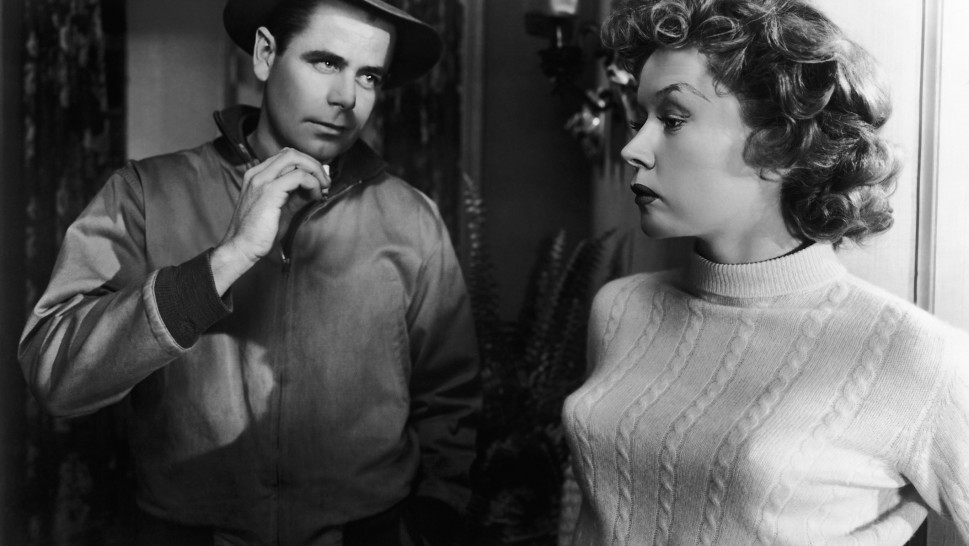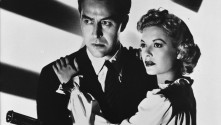
Human Desire
With Glenn Ford, Gloria Grahame, Broderick Crawford.
US, 1954, 35mm, black & white, 90 min.
Print source: Sony Pictures
Lang's dark fatalism is unleashed in his unsettling film noir adaptation of Zola's The Human Beast, the same source for Jean Renoir's eponymous 1938 masterpiece. Lang's is, in many ways, the harder, more disturbing of the two for its vision of men and women pulled inexorably by cruel forces towards certain doom, forces embodied in the endless chains of box cars and engines that glide through the train yard which is the film's evocative primary location. After the commercial success of The Big Heat, Columbia insisted on a reunion of that film's two stars, Glenn Ford and Gloria Grahame, as the doomed lovers whose brutal instincts are awakened by a true human beast, the scheming, paranoid husband played with trembling intensity by Broderick Crawford. Noir cinematographer Burnett Guffey (In a Lonely Place, The Brothers Rico) gives a steely edge to the shadows that embellish and enmesh the sordid and willfully self-destructive love triangle at the dark heart of Human Desire.








































